The Great Sandhill Crane Migration
Each spring, the annual migration brings hundreds of thousands of
sandhill cranes to Kearney, Nebraska where they stop all along the
Platte River to rest and refuel. They need to be ready to begin
nesting as soon as they land in their arctic and subarctic nesting
grounds. They begin arriving late in February and birdwatchers from
around the world follow shortly after. It is one of the greatest
wildlife spectacles in the world and it still it surprises me how many
people I know live right here in Nebraska and have never been out to
see the cranes.
Visiting the cranes is almost an annual tradition in our family.
Sometime in March, I take a look at our schedule and squeeze in two
days for the excursion. I homeschool, so we generally avoid the mass
of people by going during the week and calling it a field trip. If you
make it out on the weekend, however, Rowe
Sanctuary has a host of activities that are well worth the
investement of time (and even the little bit of money they charge for
some things). If you go with a group, call in advance. When our 4H
group went out, they took us on a hike on the trails while discussing
the life cycle of the sandhill crane and the unique challenges they
face during their migration.
Getting to the sandhill cranes
We only live about 2 1/2 hours from Kearney so it is conceivable for
us to do this as a day trip. Since the best part of the trip is
watching the birds either land at sunset or take off at sunrise,
however, we generally stay the night in a hotel. I look for the
cheapest one available with free breakfast and an indoor pool. The
kids might say that is the best part of the
mini-vacation!
Heading east on I-80, the kids start peering out their windows as soon
as we pass the Grand Island exit to see who can spot the first flock
of cranes. Though they are large birds, their gray plumage against the
browns of early March can make them difficult to spot while driving 70
mph on the interstate! It doesn’t take long, however, and you begin to
recognize the large groups foraging in the fields and the small family
groups flying in waves overhead. Welcome to the Great Sandhill Crane
Migration!
Visiting Rowe Sanctuary
Kearney is the heart of the sandhill cranes’ roosting area so it is
the best place to start for serious crane viewing.
If this is your first visit to the sandhill cranes, start out at the Rowe Sanctuary. They ask for
a $3 donation per visitor. You will very likely notice cranes in the
fields all around the sanctuary as you drive in and the air will be
filled with their calls. The sanctuary itself is beautiful and the
staff are very friendly. They are predominantly volunteers and are
happy to answer all your questions. The sanctuary has a lovely viewing
area with binoculars and field guides where my children love to sit
and watch the birds come up to the feeders. There aren’t generally
cranes in this area because they are out foraging in the fields, but
Nebraska has plenty of other birds that enjoy a stop at the
sanctuary’s feeders!
There are numerous educational displays to help you understand what
you are seeing while out watching the cranes. They also give you a
glimpse of their lives where they overwinter and where they are
heading for the breeding season. And of course, you have to take a
moment to test your wingspan against that of the sandhill crane!
Most of the trails are closed during the migration to minimize
disruption of the cranes, but there is a trail leading down to the
blinds where you can get some nice views of the river. Further down,
there is a sort of platform extending into the river where your
children can lay down, stick their arms in the river and explore a
little for themselves.
Sandhill crane etiquette
The cranes forage largely on private lands. Unless you have permission
from the landowner, respect private property and do not trespass. You
can generally get a good view of the cranes from the roadside,
especially later in the season as the birds get accustomed to the
traffic and are less flighty. Bring along a good pair of binoculars so
you can get a better view of the birds without leaving the roadside.
If you get close enough to the birds that they move, you are too
close. It is important that the birds use this time to forage. They
have to consume a lot of calories so they can begin nesting as soon as
they arrive in their summer breeding grounds. Summers are very short
where they are headed and they need to spend that entire time raising
young. Delays can mean they don’t raise young this season. One
disruption may not seem that important, but remember that thousands of
people come to see them. Those little disruptions add up!
Important!
Late winter in Nebraska can be quite unpredictable. It may be 70. It
may be snowing. It may be 40 and raining. Since the best crane viewing
occurs at sunrise and sunset, a day spent with the cranes may include
all the weather Nebraska has to offer in a single day. Dress
appropriately. Make sure you have extra jackets for small children who
get chilled quickly standing on a bridge over the river. Trust me. It
is no fun having to return to the car to warm everyone up just as the
cranes begin to land!
Sandhill crane viewing
Once you have visited the sanctuary, it is time to head out into the
country side to watch the cranes. During the day, the cranes are out
foraging in the fields. Before this area was plowed under for
farmland, the cranes wandered throughout the marshy land surrounding the
Platte River looking for snails, insects, small amphibians and fresh
young shoots of grass. Most of this habitat has been destroyed,
however, and turned into the miles and miles of corn and beans you
probably noticed driving in. Now the cranes wander through corn fields
looking for spilled grain from the previous year’s harvest.
Small groups of cranes are family groups. Cranes maintain family bonds
and frequently travel with previous years’ young. You will see them
flying around all along the Platte, looking for some place to land to
forage for the day.
Watch closely when you find a group out in the fields. They don’t
spend all their time eating and you might get to see their dance. Some
of the dancers are looking for a mate and some are pairs,
strengthening their pair bonds. Some of them may even be juveniles
imitating their parents and trying to figure it out. They don’t
normally breed until they are two and sometimes not until they are
seven. They have plenty of time to practice their best moves!
Sunset with the sandhill cranes
As the sun begins to set, the cranes move closer to the river. At
sunset, the air is full of these majestic birds and their calls as
they descend on the river. They actually roost knee deep in the
shallows of the Platte River around the sandbars. They are able to
limit the circulation of blood to their legs so they don’t lose too
much body heat spending the night in the near freezing waters. This
protects them from predators such as foxes and coyotes. While
sleeping, a crane is a fairly easy meal. But it is one that requires a
swim and the splash of a predator entering the river alerts the birds
to the danger.
There are several good viewing spots. If you don’t mind paying, Rowe
Sanctuary has
viewing blinds where you can spend the night amongst the cranes.
Some day, when I do not have several young children traveling with me,
I hope to camp out in one myself! If you have a state park pass, Fort Kearney State
Recreation Area has hiking and biking bridges over the river that
serve as excellent viewing areas. Most people there are pretty patient
with children but noise does disturb the birds. The quieter you are,
the closer the birds will land. The
Crane Trust also has an interpretive center, education programs
and viewing areas, but we have not made it there, yet.
Our favorite viewing area is the Gibbon
Bridge Crane Viewing Platform, not because it is necessarily the
best, but because it is free. When you are viewing wildlife with small
children, being able to get them quickly to the car when they are
crying and not feeling like you threw away the entrance fee for your
rather large family is pretty important! There is also a nice loop
there for the children to just run. And my children’s favorite part of
the whole crane viewing experience is actually climbing down under the
bridge. Being allowed to explore under a highway bridge is a bit of an
adventure for a child, especially when it comes with the ability to
poke sticks in the river. The only improvement they could make to the
viewing area is a port-a-potty. When your three year old has to go, he
has to go!
Sunrise with the sandhill cranes
About half an hour before the sun comes up, the birds begin to stir.
The Crane Trust has its planes out, flying low over the Platte for
their crane counts. They also look for the cricitally endangered
whooping cranes traveling with the sandhill cranes. The noise of their
calls becomes more intense as sunrise approaches and they get ready
for take off. I have not yet been able to see the cranes at sunrise.
It is another one of those plans I have for when the children are
older and less likely to be crying if I wake them up to haul them out
into the predawn chilll to watch the birds. I am told, however, that
this is where the best viewing and the best pictures are. If you are
able to make it to the river prior to sunrise, let me know what you
think!
Watching the cranes has become an annual tradition in our family
because of the majestic beauty of the birds. There are so few wild
places left, yet these magnificent birds have found a way to continue
to live among us for their three to four week stay. I love sharing
wildlife with my children and hope this yearly trip teaches them not
only about the fundamentals of bird migration and the life history of
the sandhill crane, but also to appreciate nature and the wild places
we have left.
Thank you, so much, Dana, for such a great post! I must confess that I am one of the Nebraskans who has not been to see the cranes. But your post has inspired me! Dana Hanley is a fellow homeschool mom in Nebraska, and I am excited to say that I got to meet her in person yesterday at our NCHEA homeschool conference. She happens to write her own blog on homeschooling, and even if that is not your schooling of choice, you will still enjoy reading! Check out the links to both her blog and Facebook page below! Thanks again, Dana!

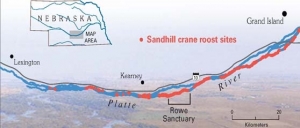
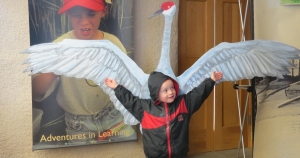
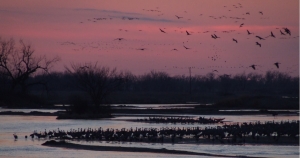
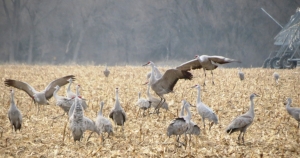

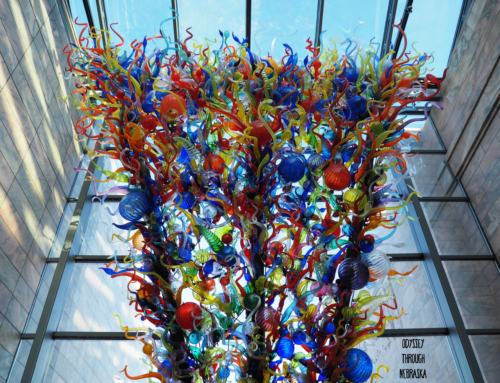


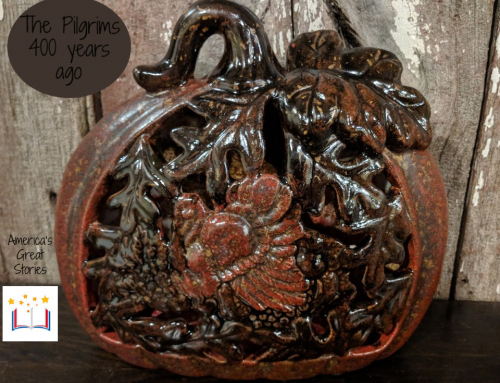

Leave A Comment